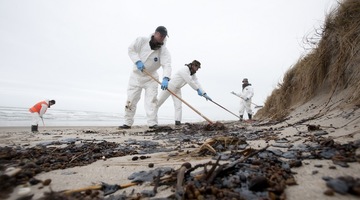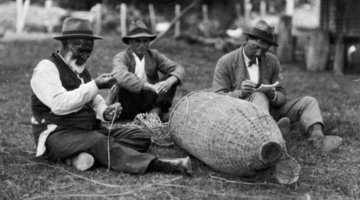

Coastal marine ecosystems balance on a fine ecological edge. They are dynamic and can easily be disturbed by human impact such as contamination from pollution or excessive harvesting. They can ...
READ MORE

New Zealand is surrounded by the sea, and scientists estimate that as much as 80% of our known species are found in the seas around New Zealand. This marine environment not only provides a ...
READ MORE

Feeding relationships are often shown as simple food chains – in reality, these relationships are much more complex, and the term ‘food web’ more accurately shows the links between producers ...
READ MORE

In this activity, students consider short-term and long-term responses to an environmental disaster such as the Rena. By the end of this activity, students should be able to: describe what might ...
READ MORE

In this activity, students become aware of the importance of estuaries. They identify some possible impacts on estuaries and possible actions that can be taken to protect them. By the end of this ...
READ MORE

In this activity, students explore Māori perspectives concerning estuaries. By the end of this activity, students should be able to: explain how a Māori legend can show aspects of Māori thinking ...
READ MORE

Come and visit Aotearoa New Zealand’s underwater world in this online citizen science project. Discover, count and identify unique fish species that live within our marine reserves ...
READ MORE

Kelp forests are one of the most biodiverse habitats on Earth. Every nook and cranny is jam-packed with life! This citizen science project wants to understand more about how kelp forests grow and ...
READ MORE

Did you know that 80% of marine litter globally starts life on land? Mizuiku Upstream Battle is a citizen science programme run by Keep New Zealand Beautiful. It aims to get volunteers across ...
READ MORE

The rocky shore is a popular topic in primary school science. Below are some Science Learning Hub resources for primary teachers related to the rocky shore in the Living World strand of the New ...
READ MORE

With 75% of New Zealanders living within 10 km of the coast, many students will be familiar with estuaries. In scientific terms, estuaries are the interface between the land and the sea – the ...
READ MORE

Aotearoa New Zealand is fortunate to have a huge diversity of marine habitats and an extensive coastline – about 15,000 km in length! More than 75% of the population lives within 10 km of the ...
READ MORE
Paul McNabb of the Cawthron Institute in Nelson explains how they got involved with the dog deaths on Auckland beaches. He takes us on the journey the scientists went through to identify what ...
READ MORE
In this video, Associate Professor Stephen Wing, from the University of Otago, talks about how our understanding of food webs has changed over the years. We now have a much better understanding ...
READ MORE
Professor Keith Hunter, of the University of Otago, explains how the ocean links several Earth systems, and is like a vast biological, chemical and geological factory. Huge currents act like ...
READ MORE

Explore this interactive diagram to learn more about life in the sea. Click on the different labels to view short video clips or images about different parts of the marine ecosystem. Select here ...
READ MORE

Water in the Earth system is influencing all aspects of life on Earth. Pathways, storage, transfers and transformations have an effect on the global climate and human welfare. Within this ...
READ MORE

Aotearoa New Zealand is a hotspot for marine diversity.
READ MORE